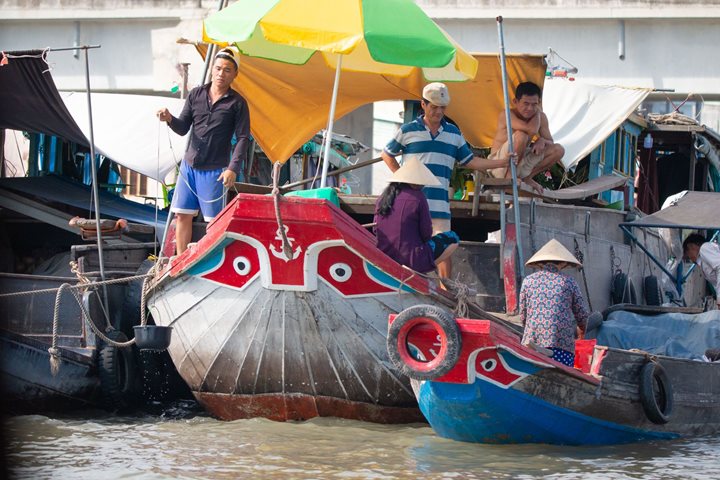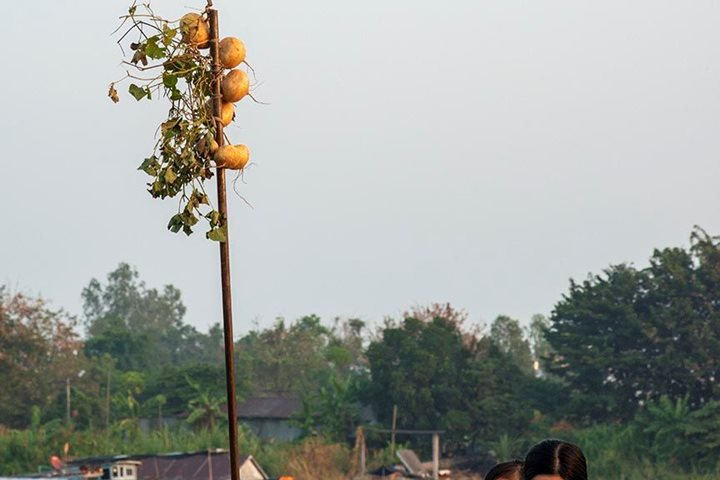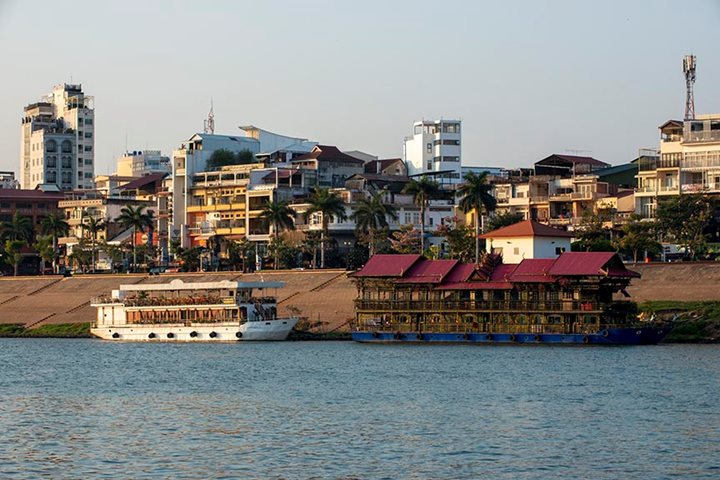While we had breakfast, the Jahan lifted anchor and moved up the river to dock at Phnom Penh for a full day of sightseeing. At the dock, a long row of cyclos waited to take us on a slow tour weaving in and out of the morning traffic, past the colonial building of the Post Office, around the hill of Wat Phnom, along the market and back towards the river side to the large open square in front of the Royal Palace. This year marks the occasion of the 60th birthday of King Sihamuni. One part of the palace was closed for visitors, because the Prime Minster of Vietnam is on a three-day visit. Fortunately, the enclosure with the Silver Pagoda, named for its silver tiles, and various stupa dedicated to some of the kings was open to visitors. Our next stop was the French-built National Museum, which first opened its doors in 1920. The fabulous collection of Khmer art, mainly bronze and sandstone statues of Hindu deities and Buddha, is the best in the country and one of the best in the world. For a small donation, short sticks of jasmine flowers can be offered to some of the statues, which are not merely museum artefacts, but function as objects of devotion in a living culture.
After a relaxed lunch at the Topaz Restaurant, we were confronted with one of the harsh realities of the Khmer Rouge period of terror, which lasted 3 years, 8 months, and 20 days from 1975 till 1979. At Tuol Sleng, a former high school compound, turned into an interrogation and torture centre, we encountered two of only seven survivors, who had saved their lives by being useful to the Khmer Rouge leaders due to their professions, one as a mechanic, the other as a painter.
After this very sobering experience, we had options to visit the Killing Fields, or Tabitha, a charity which has been operating within communities for more than 20 years, encouraging savings, providing schools, housing, education, and more recently a hospital.
Back on the Jahan, we enjoyed a BBQ buffet out on deck followed by a dance performance by students of the Cambodia Living Arts program accompanied by a small orchestra and two singers. The Blessing Dance of the Apsara dancers was stunning to say the least, and contrasted with the two folk dances.
We were docked in Phnom Penh for the night, providing an opportunity for an evening stroll on the boulevard along the river.







